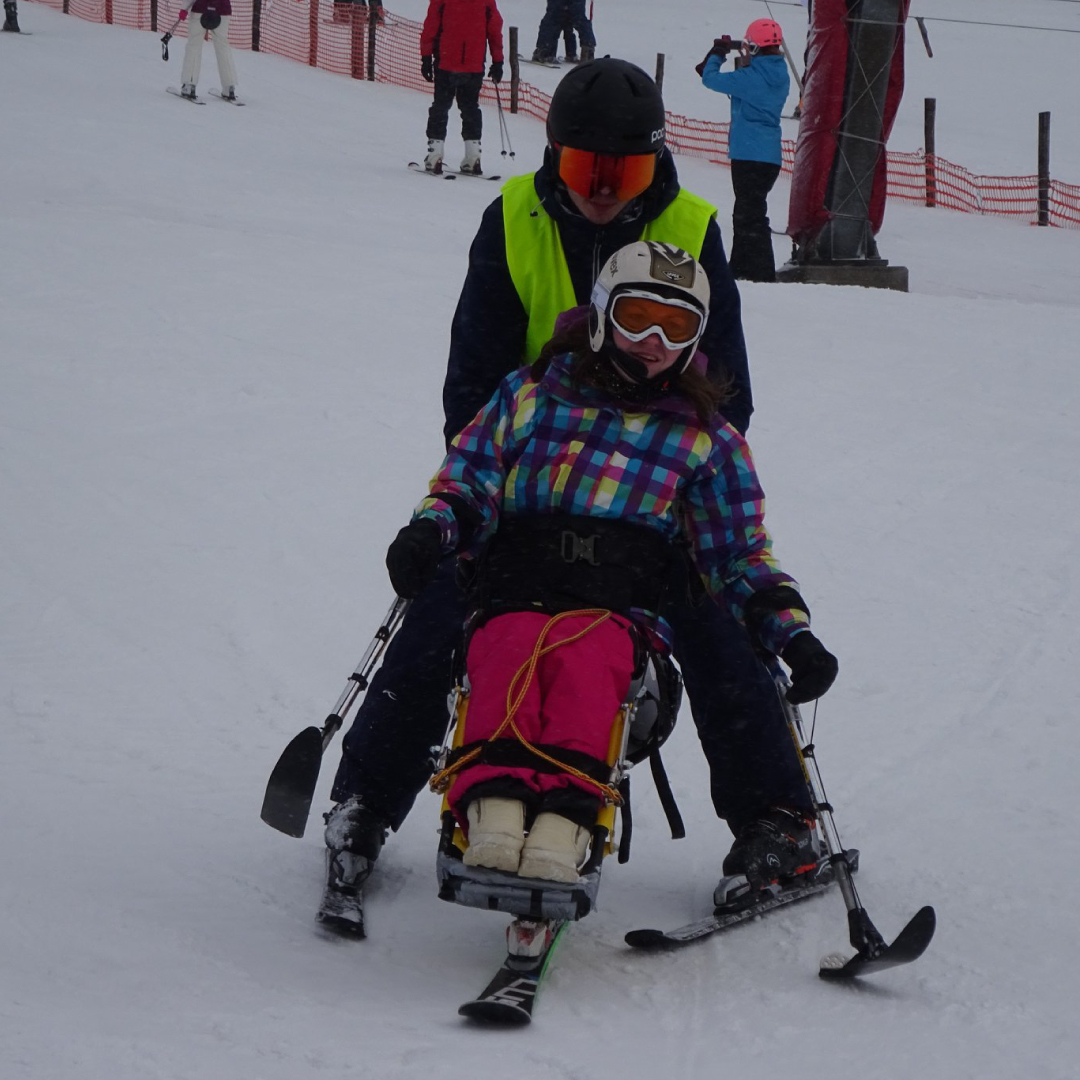The Wheelchair Sports Club Prague went to the traditional January beginner skiing course at MONOSKI. This year, before the beginning of winter, we were approached by STAKI, a company that produces innovative skis with a unique patent in the form of a special stabilizing foot. STAKI offered us 2 pairs of these innovative short skis for the whole course and since we like to test and try new tools when teaching skiers at MONOSKI. We were grateful for the opportunity to try something new.
Teaching skiers on MONOSKI has a lot of specifics. As you can see in the photos. Full or partial contact of the skier on MONOSKI with his assistant/instructor is needed during the skiing. Short skis are suitable for this. These can be short slalom skis, or skis called bigfoot or snowblade. However, neither option is ideal.
Short slalom skis range from 155 to 165 cm for an adult. This provides the necessary support, but its length is still too long for the assistant to manoeuvre sufficiently when in close contact with the skier on the MONOSKI. The tips of these skis then encroach on the space that should be reserved for the MONOSKI skier’s stabilisers. In this case, the stabilizer comes into contact with the assistant’s ski and, in extreme cases, a fall may occur. Longer skis will also prove disadvantageous for off-piste locomotion. This is when moving and supporting the MONOSKI user.
At the opposite pole are the aforementioned bigfoots or snowblades. Skis mostly with universal bindings without spring release. The length of these skis suits the needs of the assistant who skis in close contact with the skier on the MONOSKI. The disadvantage is the instability of these short skis. They are “playful” skis that do not keep the track when the speed increases. The assistant then loses stability when guiding the skier on the MONOSKI. When slowing down, the ski has to absorb the weight not only of the assistant skier but also of the skier on the MONOSKI. In addition, the MONOSKI itself weighs 40 – 50 kg. The product of these weights, speed and gravity, can make it difficult for even the most experienced assistants to slow down from higher speeds. Even when off-piste, the low drag makes it hard to bounce off the skis and when assisting a skier on the MONOSKI on a flat surface, these short skis slip.
The STAKI skis proved to be the golden mean. The skis are slightly longer than bigfoots/snowblades. Thanks to the special tail that STAKI skis have, they are surprisingly very stable at higher speeds despite their length (1m). Handling and manoeuvrability is absolutely ideal despite the limited range of movement of the assistant skier, who rides in close contact behind MONOSKI. Movement on a flat surface is also easy even on hard frozen ground.
The skis were tested by various experienced assistants. And for the less experienced ones, the confidence in driving and teaching the skier on the MONOSKI was visible. The more experienced assistants could then afford a faster ride with a shorter radius of arc. In order to understand the importance of correctly chosen skis to assist skiers on MONOSKI, it is necessary to put yourself in a situation where you are riding in close contact with the skier and have the task of directing the mentee and even preventing him from falling. This requires stability and control. STAKI skis fulfil both perfectly. When a fall occurs, you need to lift the skier off the ground and you need to be both agile and stable on the skis.
With STAKI skis, we will be able to ski much better with wheelchair skiers and the skis will definitely make it easier to teach disabled skiers.

